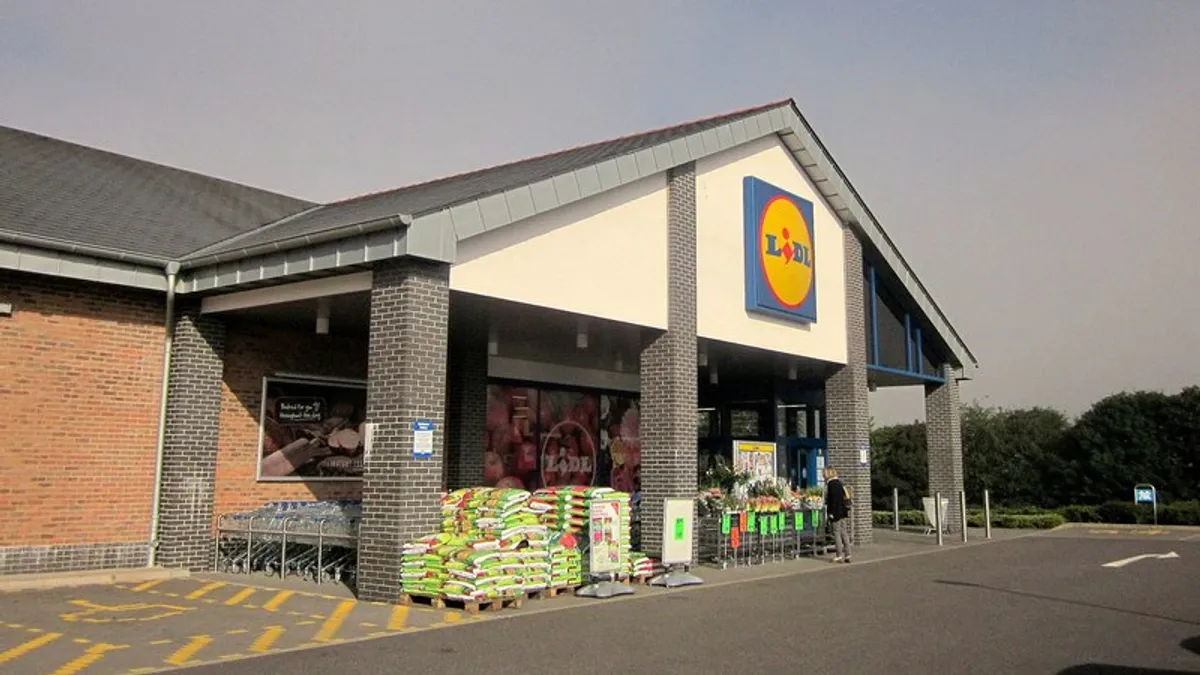Dive Brief:
- A pricing study conducted by Deutsche Bank found prices in Lidl stores were 5.7% to 10% less expensive than Walmart, and 15% cheaper than Kroger, according to Supermarket News. Prices were equal to those found at fellow discounter Aldi, the researchers noted.
- Deutsche Bank’s research team, which studied prices at three North Carolina Lidl locations, found the discounter’s center store products have a greater price advantage than its fresh items.
- Researchers noted Lidl may not pose as much of a threat as some fear, since hard discounters have operated in the U.S. for many years and “have not resonated with U.S. consumers in the same way as with European consumers.”
Dive Insight:
These results should come as no surprise to anyone who’s been following Lidl in recent months. The discounter, which has marched across Europe over the past decade by building more than 10,000 stores in 26 different countries, has promised to have the lowest prices in each of the U.S. markets it serves.
Lidl has said its prices are as much as 50% lower than competitors. Industry experts have estimated the price advantage is closer to the 20% to 30% range — which is still significant.
This makes Kroger’s 15% price lag look pretty impressive. The grocer, which saw its stock price plummet this month following Amazon’s planned acquisition of Whole Foods, has invested heavily in price discounts, hoping to position itself as a good value in the eyes of its customers. Although it can’t beat Lidl, Aldi or even Walmart on price, Kroger can come close and let its services, quality and execution carry it the rest of the way. Indeed, even retailers that are highly differentiated from Walmart and the hard discounters need to project a value image against so much price competition.
Lidl’s advantage over Walmart is more of a surprise. The world’s largest retailer has been pushing its suppliers to bring down prices, and executives have said they want products to be around 15% lower than nearby competitors. But the machinery behind this operation is incredibly complex given Walmart’s footprint and its thousands of suppliers. Lidl, in contrast, controls upward of 90% of its merchandise, and can quickly adjust its pricing. With many of its new stores located within a mile or two of Walmart locations — right across the street, in some cases — Lidl is not hiding its intentions. The battle between the discounter and the supercenter retailer is shaping up to be one of the most significant in an industry full of much-watch competitions.
And then there’s Aldi, which matches Lidl on price, format size and increasingly (given its recent remodels) store experience. Much will be made of the dual between the two discounters, but their impact on the industry is arguably more significant. Although hard discounters have been around for some time in the U.S., as the Deutsche Bank report notes, they are evolving into much more competitive stores, with quality offerings and execution to match traditional retailers, and with prices that are impossible to beat.









